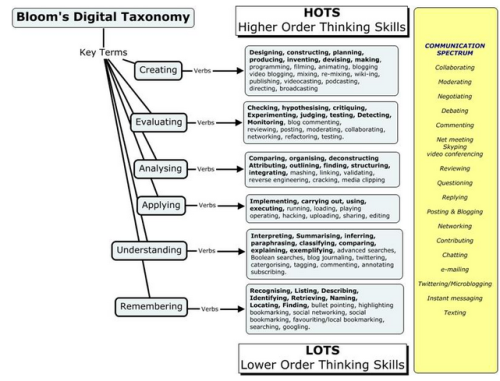
image by opensource.com
How Open Source supports Education
The Open Source movement grew out of the frustrations users have in proprietary hardware and software; technologies that enable barriers to use and models of development that alienate the user.
Eric Raymond uses the metaphor of the Cathedral and the Bazaar to talk about these opposing models of software development. In the Cathedral model there is top down control on the design and the implementation of the project (an analogy to the building of cathedrals in the middle ages).
The project is unveiled once built, whereas the bazaar model is much more informal, messy, open and relies on community participation. Open Education and Open Educational Resources share a similar ethos with Open Source with a focus on sharing and accessibility to learning.
A brief history of Bloom’s taxonomy for learning
In 1956, Benjamin Bloom, an educational psychologist developed a taxonomy of Educational Objectives, proposing that that learning fits into one of three psychological domains; Cognitive, Affective and Psychomotor and that learning objectives can be designed around these. Fast-forward to 2001 and student of Bloom Lorin Anderson and David Krathwohl, revised the taxonomy to include the use of verbs rather than nouns for the categories within the cognitive domain and rearranging it as a progression from ‘lower order thinking skills’’ to ‘higher order thinking skills’:
So this… Becomes:

Creating a Digital taxonomy
On the Edorigami Wiki, Andrew Churches documents an update to Bloom’s Revised Taxonomy that accounts for the “new behaviours, actions and learning opportunities emerging as technology advances and becomes more ubiquitous”. This revision provides further granularity and suggests a taxonomy based upon the opportunities that technology provides:

The Tools
Within the educational institution, we are often prescribed proprietary solutions to work with, such as Adobe’s Creative Suite and Microsoft Office, but there are a range of free and open source alternatives that help develop transferable skills and promote sharing and collaborating. So with this and Bloom’s in mind, here’s a freely available collaborative list of tools that support a taxonomy of learning and teaching verbs. Feel free to use, add to, comment upon and vote for your favourites.
